How much does it cost to travel full time: Our First-Year Budget and Expenses
Greetings! ¡Hola! Howdy! Bienvenido! Buenos días! Nǐ hǎo! Shalom! We’re Jeff and Sandra. In 2022, we made the bold decision to move abroad—though we had no idea which country would be the one. 🤷♀️🤷♂️ Since 2023, we’ve been American Expat nomads, living abroad, on a budget, one country at a time. As full-time international travelers ✈️🚅🚌, we’re exploring places that offer both affordable living and rich cultural experiences.
So, how much does it cost to travel full-time? That’s exactly what we’re breaking down in this post. But this isn’t about what it costs to travel—it’s about what we actually spent to live abroad for a year, including everyday expenses we would have had even if we’d stayed in Oregon.
This deep dive into our budget pulls back the curtain on the financial reality of full-time international travel. We’re sharing real numbers, the lessons we learned, and how two people managed to visit nine countries without spending a fortune. Spoiler: long-term travel can be more affordable than you think—with the right mix of planning, flexibility, and a willingness to adapt.
If you want to know why we travel fulltime and how we got started – we share that info on our travel journal.
What we mean by American Expat Nomads
Over the past 12 months, we’ve explored nine countries, including a two-month visit back in the United States. That means we’ve traveled to and lived in eight foreign countries: Panama, Costa Rica, Portugal, Spain, France, England, Canada, Argentina
We prioritize slow travel, immersing ourselves in the daily routines of live in each destination. In fact, we stayed for more than a month in six of these countries, giving us the opportunity to truly experience life as locals rather than just tourists.
👋 New Here? We’re Jeff and Sandra, American expat and senior nomads, living abroad, on a budget, one country at at time. Most days, we’re just doing what we’ve always done— making ourselves a home, working on projects, cooking, and running errands, wherever home might be at the moment. Sometimes that means checking out local activities and visiting museums and historical sites; other times, it means finding out which local restaurant has the best pizza or empanadas and which grocery store sells peanut butter.
This life isn’t always glamorous; but it’s ours—and we’re here to share with you what we learn.
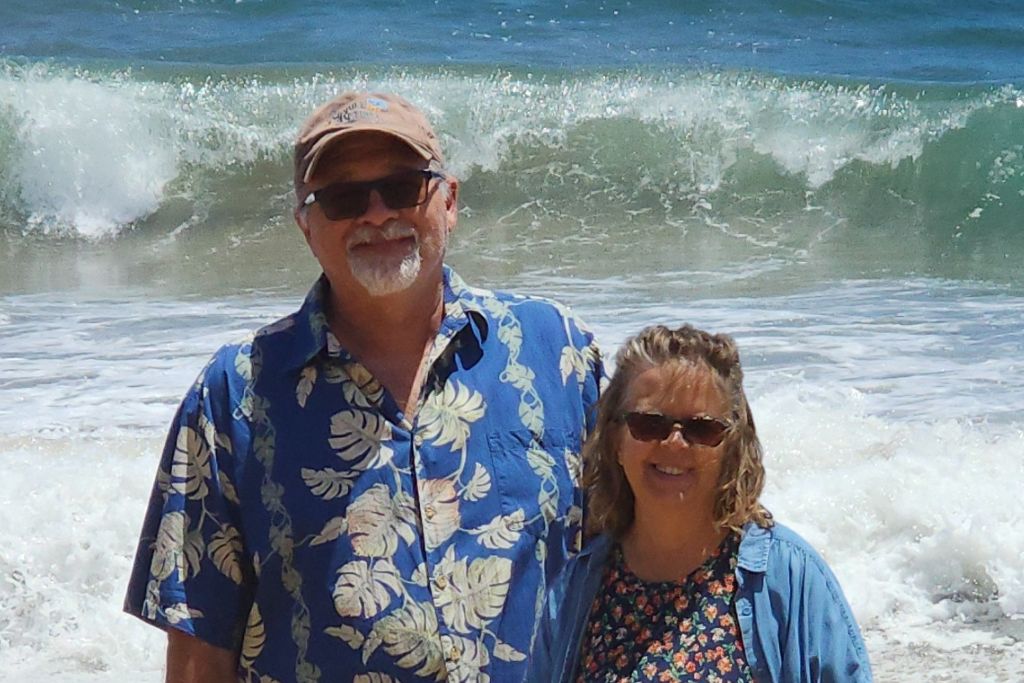
How We Budgeted for Full-Time International Travel
Let us preface this with a caveat – when we say ‘budget’, what we really mean is ‘target’. We were making semi-educated guesses about what it would cost to live in a random selection of foreign countries when we initially set up our “budget”.
Our original goal was to see;
- if we could travel full time internationally and get change back from $40,000 per year, and
- can we do that while spending a significant amount of our time in Europe?
The short answer is essentially – Yeah, but….
Spoiler alert… we didn’t… but we learned several valuable lessons and figure we’ll do better this coming year.
We’ll share how we arrived at our target number for each category, where we went over and most importantly, WHY we went over.
Our Budget Categories for ‘How much does it cost to travel fulltime’
The categories we use for tracking, and one way or another this accounts for every dollar we spent:
- Accommodation
- Relocation expenses
- Local travel and activities expense
- Food – food out and food and stuff purchased in a grocery store
- Health insurance and healthcare
- Technology
- Clothing and misc
- Non travel related stuff
Continue reading as we break it all down and get a little bit granular on each of these categories, what were the major impacts to the numbers and can we, or will we, do anything differently in to improve our numbers.
At the end we’ll give you the grand total we spent in year one. Or, if you math, you’ll know by the time we get there. But stick around to the end for ‘lessons learned’ and get a chance to ask your questions, whether it’s budget related or just about our first year as nomads.
I’m sure it will come as no surprise that the three biggest expenses are food, lodging and travel. Those three categories represent 70% of our expenses.
If you’d rather watch the video you can do that here:
Our First-Year Budget and Expenses or ‘what it cost us to travel fulltime…‘
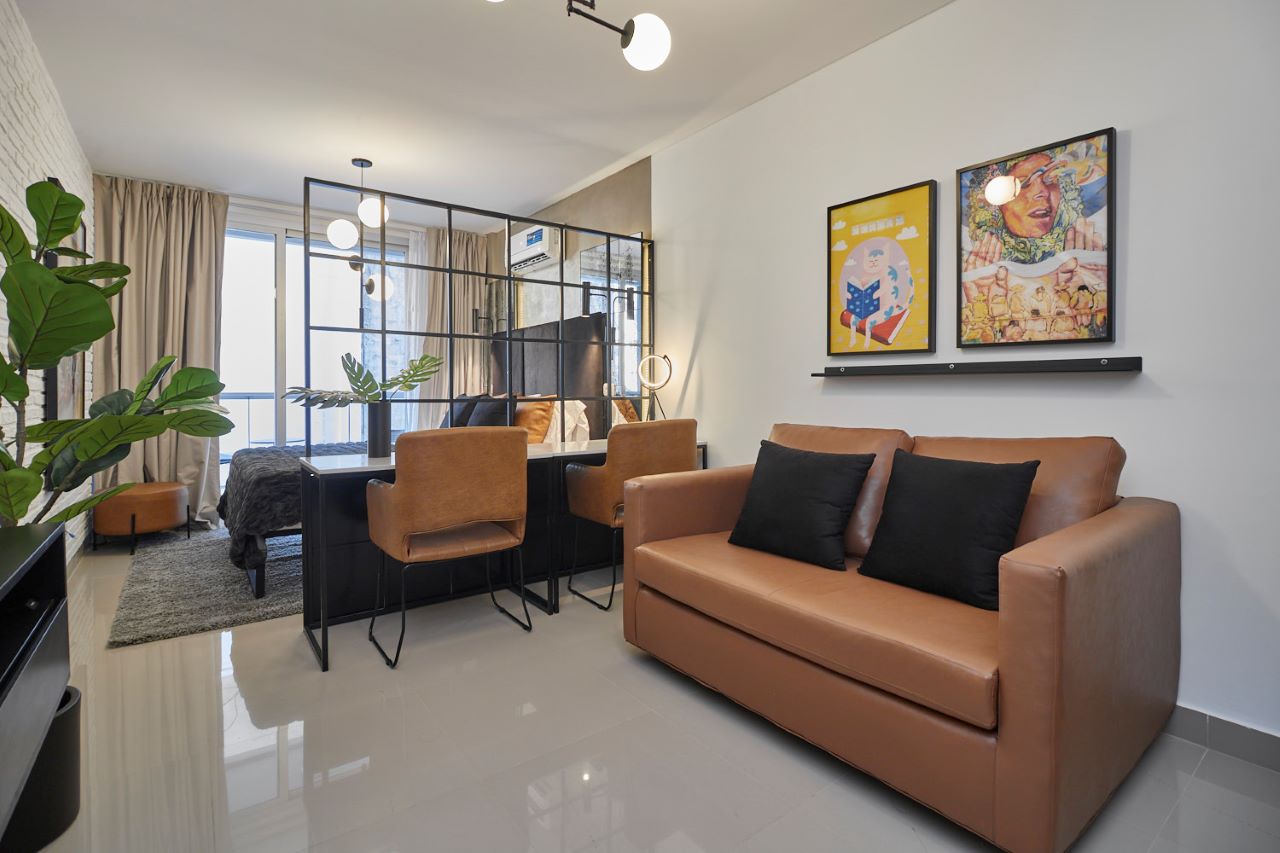
Our Accommodation Costs
Notes about our accommodation choices
- We mostly use short term rentals or serviced apartments and book for a month long stay. Example:
- We stay in hotels as little as possible, usually if we have a 2 or 3 night stopover, mainly because having kitchen facilities to prepare meals is important to us as budget-conscious travelers
- We usually book on the outskirts of town if we have to use hotels. For example:
- the last few nights in England we stayed near Heathrow Airport and used the bus and train to get into the city each day.
- Because our room was just outside of London’s central touristy areas we paid $480 for 3 nights rather than $300 per night, and it was a nicer, larger room.
- But this also meant that we spent $35 a day on transport back and forth to the city, a little over an hour each way but the overall savings it was well worth it to us.
- Another example: In Paris we stayed north of the river for $98 per night, we could easily have taken the metro into the city for a few bucks but we actually spent our time exploring St Denis and St Ouen instead.
- the last few nights in England we stayed near Heathrow Airport and used the bus and train to get into the city each day.
What mistakes did we make regarding our Accommodation Budget
When we did our initial accommodation budget; we used the websites idealista and flatio to get an idea of housing costs. These sites indicated one bedroom apartments were available in a lot of the cities we were thinking of visiting for around $500 or $600 a month. What we didn’t factor in was that short term rentals (less than 6 months) cost 2 to 3 times as much as long term rentals.
(Note: At the time we had not yet discovered how to find more affordable places to stay)
Accommodation Expenses Budget vs Actual
Our initial, poorly researched, budget was $8,400 for the year. What did we actually spend? $11,858
Why we went over budget on Accommodation Expenses
Our accommodation expense could have been lower but we ran into a situation in England that necessitated a 29 night rental we hadn’t counted on. And in Panama, we swapped places at the last minute and what was originally a $1,000 expense became a $1,300 expense – totally worth it to have a 25th floor, ocean view condo for the month instead of a ground level, street view apartment.
We did offset our housing costs a little bit with pet sits. For example, we had almost no housing costs for almost two months because we had back-to-back pet sits when we returned to Oregon.
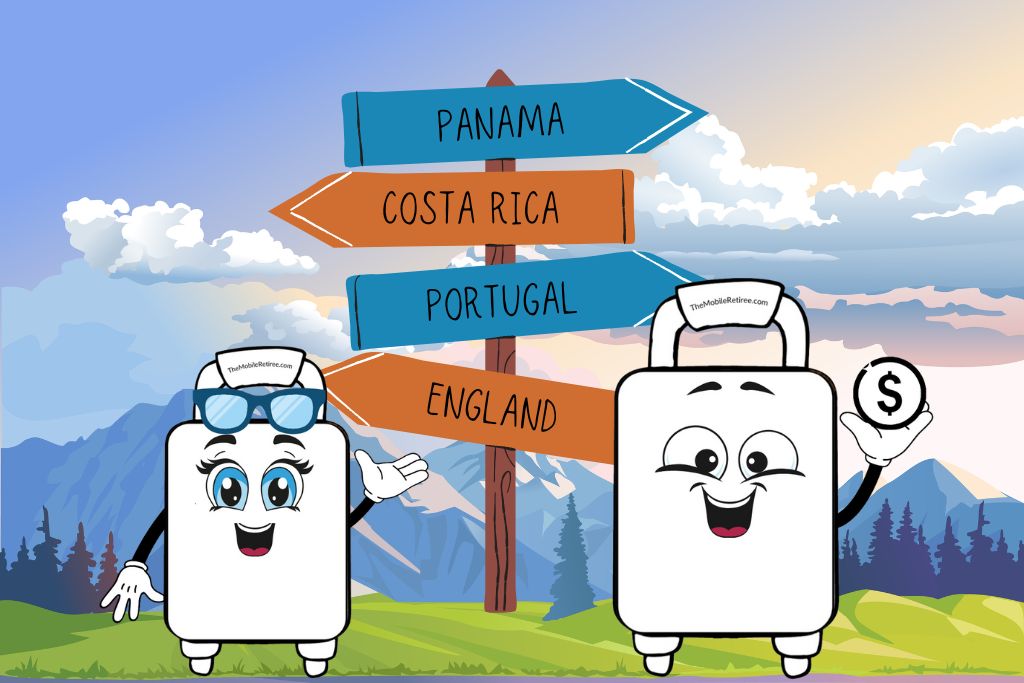
Our Relocation Travel Costs: Flights, Trains, and Ferries
This category covers expenses getting from one destination to another; includes our airfare, train, bus or ferry tickets between locations and getting from the plane, train, ferry, etc., to our accommodations. This category also includes travel insurance because travel insurance is about canceled flights, lost luggage etc. It also covers transport between apartments, including moving across town to a different apartment.
This is an area of the budget where we went way over buuuut at least we did it with some intention rather than just guessing wrong to start with.
The excess was pretty much all spent for our comfort and convenience. We could have managed the same moves and stayed on budget but we wouldn’t have enjoyed it as much. We always discuss the extra expense and then decide if comfort and/or convenience outranks costs.
Examples of when comfort and/or convenience outranks costs:
- Our first flight from Oregon to Panama, there was a last minute upgrade offer to bump into 1st class on the Portland to Miami leg. We spent a few hundred dollars for that.
- Flying Costa Rica to Portugal, London to Winnipeg, Manitoba to Washington state and Oregon to Argentina, we paid seat selection and upgrade fees every time. Jeff is 6’2” with long legs so economy standard isn’t acceptable for any flight over 2 hours.
- Sometimes it was about the experience and comfort…
- When it was time to move from Portugal to England, we had the option take a 42 hour series of overnight buses plus a ferry for about $300 or fly for around $350; including extra legroom and a checked bag (which we’ve since managed to do away with) but we chose instead to take a combination of a bus, high speed train and ferry for the experience. This allowed us to stop over a few nights in Barcelona, a few nights in Paris and a few nights in Caen before crossing the channel by ferry to Portsmouth. That combination of transportation methods wound up costing closer to $800 as well as increasing our accommodation and food expenses for the month.
Relocation Travel Expenses Budget vs Actual
The budget for relocation travel was $7,200 for the year. In the end we spent $10,843.
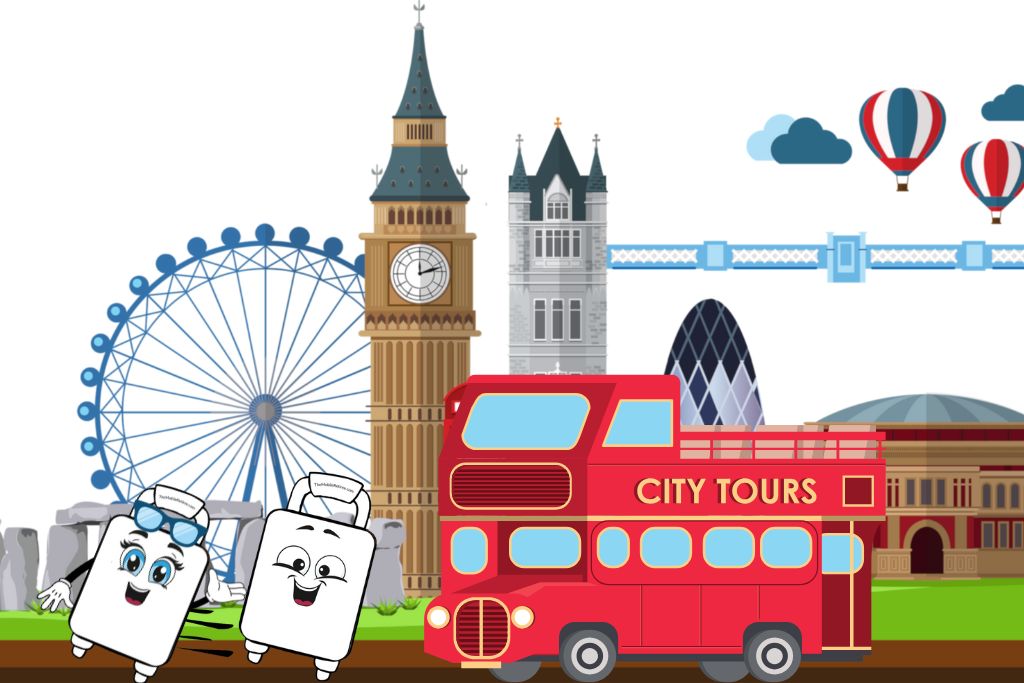
Our Local Travel and Activities Expenses
This line item includes Uber/Bolt rides, taxis, buses, trams and trains to get around after we have arrived at our new accommodations, and all the touristy and sightseeing things (admission and entrance fees to museums, etc.) Like our guided tour of La Sagrada Familia in Barcelona and our train ride from Faro to Tavira in the Algarve.
Note: There can be a bit of a misconception here. We’re somewhere between tourist and expat—yes, we do some sightseeing, but most of the time, we’re just living our lives as we would back in Oregon. Sure we go out a “do stuff” but we aren’t rushing to do all the stuff a tourist would do.
Local Travel and Activities Expenses Budget vs Actual
Our budget for local travel and activities expenses was $400 per month, or $4,800 for the year. We came in at $3,737 for the year, averaging just over $300 per month. This category can be pretty volatile: one month we spent nearly $600, while another month we spent $0. The biggest splurges? The Harry Potter Studio Tour and La Sagrada Familia. No regrets on either—totally worth it!
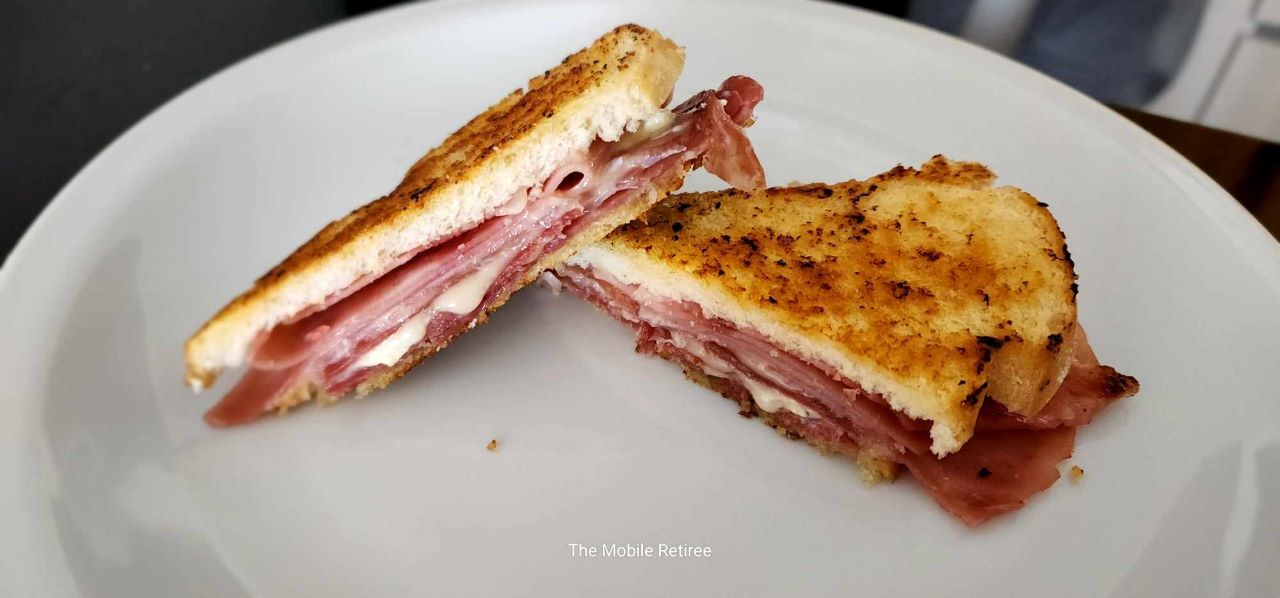
Our Food Costs (Restaurants and Home Cooked Meals)
We broke out into two categories; Food out and Groceries
Food out
Just like when we live back in the States, we don’t eat in restaurants very much. More than some travelers but less than most tourists. Food budget assumptions here were total guesswork based on the idea that we’d want to eat out sometimes, and it would cost less to do so than it costs in the US.
Food Out Expenses Budget vs Actual
We plugged in $450 per month as a placeholder so, $5,400 for the year. We ended up spending $6356. Primarily because we ended up staying in a couple of places where we didn’t have kitchen facilities. And we ate on a ferry and at a couple of airports.
Note regarding our final numbers:
- From Nov 15, 2023 to Aug 12, 2024 we had 145 meals out
- From Aug 13, 2024 to Oct 15, 2024 we PAID for 30 meals out but some of these meals also included guests – so the ‘Food Out’ math is whack.
Groceries
We were pretty flexible in this category in order to simplify expense tracking. Some folks have a separate line for ‘household goods’ and/or personal care products like shampoo and razors, etc.
We lumped all that together, basically, ‘stuff we bought in grocery stores’ is in this category. Lunchmeat and sandwich bread share equal space with the roll of paper towels, the bath soap and all.
Groceries Expenses Budget vs Actual
Original budget was $450 per month, again, $5,400 for the year. Final total, $5,143.
Total Food Expenses Budget vs Actual
The total target number for all Food (food out and groceries) was $10,800 for the year and we went over by over $700 – all of it in the ‘food out’ category.

Breakdown of our Health Insurance and Healthcare Expenses
This category includes our international health insurance, our US healthcare coverage and also includes any prescription refills and all drugstore purchases
We bought our international health insurance through IMG for $2,411 which if you average out comes to $201 per month.
Learn more about >>international health insurance vs travel insurance<<
Additionally, we maintained our Affordable Care Act plan at $81 per month because we knew we would be spending a month or two in the US.
- Jeff has a preexisting condition that requires an annual visit to the cardiologist, BUT
- we are rethinking the US healthcare coverage because if you figure the monthly premiums and deductible of $185, we spent $1,200 in exchange for $300 worth of care
- On the other hand, US healthcare coverage would cover any catastrophic event, like if my implanted cardioversion device went haywire while we were Stateside.
- I hate paying for insurance because you really want to NOT use the benefit but if you don’t use it, then it feels like wasted money.
This category also includes prescription refills which are WAY cheaper in Europe than North America.
For example:
- we spent more for a 28 days supply of 2 medications in Canada than we spent the entire 5 months in Europe, and it’s not even close. Not. Even Close.
- Refills on a couple of 90 day prescriptions in the US and the insurance co-pay was more than I would have paid in Portugal to just walk in and buy the meds outright
Health Insurance and Healthcare Expenses Budget vs Actual
This category was budgeted at $3,960 for the year ($335 per month) and the final total was $4,026
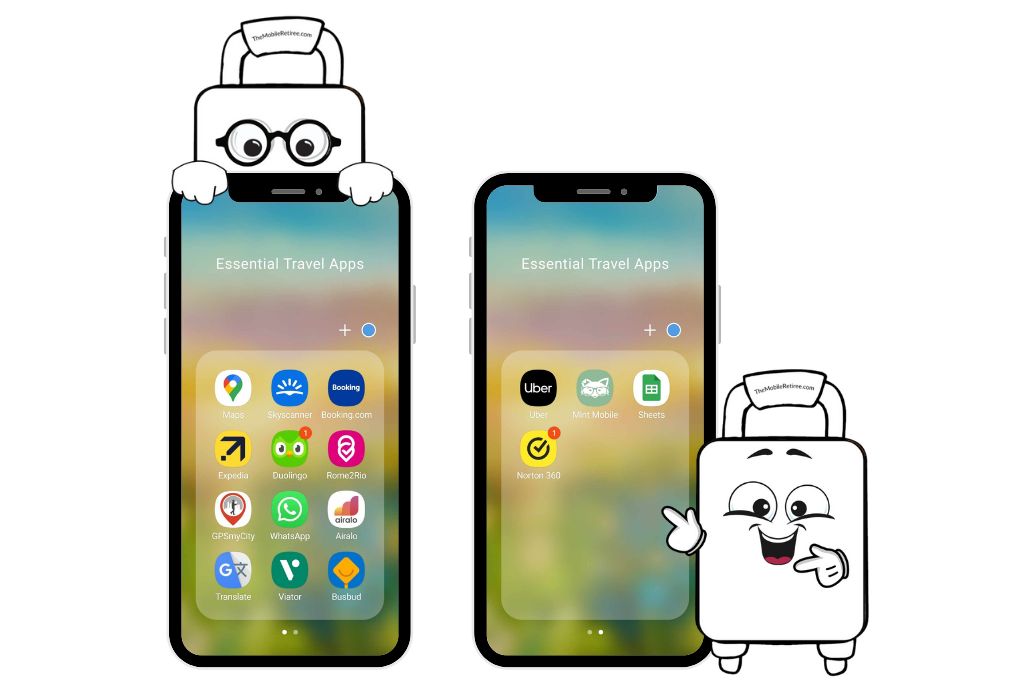
Breakdown of our Technology Expenses
This category includes a variety of expenses related to running our travel blog, such as website hosting fees, a Google Workspace account, and subscriptions for programs we use to edit images and videos. It also covers our mobile phone plans and international data usage.
Travel Blog & Software Costs
Maintaining a travel blog isn’t free! We incur ongoing costs for our website hosting, domain registration, and tools like Google Workspace, which keeps us organized and connected. Additionally, we use paid programs for photo and video editing to ensure our blog posts and social media content are high-quality. These tools are essential for sharing our journey with you and keeping the blog running smoothly.
Cell Phone Coverage & Data Plans
Before departing on our full-time travels, we switched to Mint Mobile to cut down on our U.S. cellphone costs. Our primary requirement was to keep the phone numbers we’ve had for over 20 years, especially since some banks require a U.S. number for authentication purposes.
Mint Mobile has been an incredibly cost-effective solution for us. For just $180 per year per person, we each get 5GB of data per month, along with unlimited talk and text. That’s right—just $15 a month!
Switch to Mint Mobile and stop spending so much for wireless. Use our referral link to get $15 in renewal credit and for a limited time get 1 month free on the 3-month 5GB plan. Then use the money you save to buy something fun. http://fbuy.me/uHXgy
International Data Coverage
For international travel, we rely on Airalo eSIMs for data coverage and try to use Wi-Fi whenever it’s available. We each purchased a 20GB, 365-day plan from Airalo for $70, which provided excellent value for staying connected in all the places we have visited.
However, our data usage varies. I (Sandra) typically use up data more quickly than Jeff since I’m the one handling navigation tasks when exploring unfamiliar cities. I ran out of my 20GB plan by late June and had to purchase an additional top-up, while Jeff’s plan lasted the entire year, with just a small amount of unused data left over.
Technology Expenses: Budget vs. Actual
We initially estimated $100 a month for technology, budgeting $1,200 for the year. However, our actual expenses totaled $2,182—nearly double our expectation. This increase was primarily due to costs associated with maintaining and upgrading our blog, as well as additional data top-ups and subscription fees for our software and tools.
Despite the higher-than-expected costs, these investments have been essential in helping us document and share our journey while staying connected wherever we roam.
Note: Our technology costs are somewhat distorted because some expenses carry over or were paid before we started tracking for our nomad lifestyle. For example: Jeff’s phone service is paid up through September 2025 of next year and Sandra has enough data remaining on her data plan to probably get through April.

Breakdown of our Clothing and Miscellaneous Expenses
This category is kind of a ‘catch-all’ but not much fell into ‘miscellaneous’ really. It includes clothing and cigarettes, monthly subscription to Ancestry.com (coz we’re also researching our family history while we travel), and the occasional misc item that doesn’t fit other categories like hand towels or a spatula for the kitchen because the airbnb didn’t have any.
A good chunk of that was refit costs while we were in Oregon. Jeff needed a new pair of trousers and it was time to replace socks and briefs. Jeff also replaced his puffy coat (a pita to pack) with a windbreaker/raincoat and Sandra had some clothing and misc expenses as well.
Clothing and Miscellaneous Expenses Budget vs Actual
The budget was $45 per month because, we had no idea, right? The total expense for the year was $2,080.
Breakdown of Expenses Not Related to Travel
Aside from the expenses of traveling full-time, other stuff also happens in our lives and we would have had these expenses even if we weren’t traveling.
We have life insurance policies, we were paying for E&O insurance for our business for 8 months after we dissolved our LLC. There’s also insurance for the pickup we left behind with our son, disability insurance…
Non-Travel Related Expenses Budget vs Actual
We spent $4,566 for the year against a budget of $2,700. (The E&O insurance accounts for the overage)

Budget Breakdown Wrap up
As we said earlier, when we first started developing our plan, one idea was to see, “Can this be done for under $40,000 without making too many sacrifices?” For instance, we don’t do shared bathrooms with strangers and have very little interest in renting a bedroom in someone’s home. We like our own space, not least because we spend a fair amount of our time at “home,” wherever that happens to be at the moment. This isn’t a vacation, so we aren’t out doing things every day.
We’ve watched a lot of budget videos and read plenty of blog posts from other nomads, and the number that comes up most often for this lifestyle is $4,000 a month or $48,000 a year. There are definitely people doing it for less, but they make compromises—cutting back on activities and scrimping on transportation. For example, faced with the choice between a $300 four-hour train ride or a $65 eleven-hour overnight bus, we’re on the train, they’re on the bus. They eat in restaurants twice a month; we’re closer to twelve. Those little choices add up, depending on how you want to travel and how you choose to spend.
Another thing to be mindful of when watching traveler budget videos is what’s actually being accounted for; We saw one that had impressively low numbers, but then they casually mentioned owning a home in one of the countries where they spent three months – so they didn’t factor the cost of owning the home into their budget or expenses.
Most of the things we “splurge” on are small upgrades, but over time, they add up. For example, we made five major moves and basically spent an extra $500 each time—suddenly, that’s $2,500 over budget.
Affordable Full-Time Travel: Our First-Year Budget and Expenses – Final Numbers Budget vs Actual
The final total for our first year as senior nomads was… drumroll, please… $50,791. Measured against our original budget of $39,600, that’s a lot. Measured against what it would cost to live in one place in Oregon, it’s actually not that much. Our average expense is $4,225 per month… Excluding Relocation Travel Expenses, the total for our LIVING EXPENSE was $40,250 or just over $3,300 per month.
What Have We Learned?
Well, a lot of things—some even relevant to the budget!
We learned that
- we had underestimated how much extra we were willing to pay for comfort and convenience. This preference shows up in our accommodation and relocation expenses.
- we need to stick with longer stays (ideally a month or more) and avoid the costly three to five night city visits if we want to stay on budget.
- staying in an short term accommodations for longer stays often means incurring unexpected “household goods” expenses. Many short term rental may stock the basics, but usually only a two-day supply—things like TP, paper towels, and dish soap.
- This also means we end up wasting money on items we can’t consume in a month but can’t carry with us when we leave.
- For example, trash bags often come in boxes of 25, and we’ll use four or five of them. There’s no room in the backpack to bring them along, and every short term rental seems to need a different size bag anyway.
- This also means we end up wasting money on items we can’t consume in a month but can’t carry with us when we leave.
We’ve modified some eating habits to reduce waste. We both enjoy a bit of Dijon mustard on a sandwich, but we can’t buy “just a bit”— a four- or five-ounce jar is is enough for several months but since we’re only in a place for 30 days, we’ll barely use it. Taking it with us isn’t practical, so we just skip it. However that jar of hoisin sauce we spent $11 on (versus $5.79 back in Oregon) – we’ll definitely consume all of that during the two months we’ll be in Buenos Aires.
Finally, we learned the importance of asking clarifying questions and communicating more effectively (more on that in a later blog post)
We hope you found our budget breakdown helpful! Reach out to us if you have questions
FAQ
Q: What challenges have you experienced and how do you deal with them?
My initial response when this came up a few days ago was “We really haven’t had any challenges”. But, that’s not true from the perspective of someone who hasn’t traveled extensively or is nervous about traveling. Some things we laugh off could be considered challenges;
- We were scheduled to change cities in England and a rail strike was announced. Now we have to cash in the train tickets and sort out transportation by bus.
- We had a pet sit where we discovered after the owners had left that they were really not into cleaning the kitchen, to the point where we had a discussion about whether we should just leave, or suck it up and spend the couple hours getting it to where we were comfortable cooking there
- Language can be a big challenge because of regional dialects and attitude towards non-speakers. Most of the time it’s fine, maybe you have to lean on Google translate a bit but in most settings, people want to help you. When you’re in a store or restaurant, they want you to eat and buy things so they’ll usually work with you. Usually. We have been to a few places where it was pretty obvious they don’t see many americans and those haven’t all been good experiences. Public transport can be more brutal, they just want you to sit the hell down
- There are some common things that some folks may consider challenges but we call them ‘mental travel tax’
- When we go grocery shopping, we need to be able to figure out the most common words we’re looking for and also if there is any difference in usage. In Panama I bought a half pound of an absolutely horrible turkey loaf lunchmeat substitute thing that we ended up throwing out. I thought I was buying turkey breast. It was not.
- Outside North America we find a lot more specialized stores and even some different marketing practices. For example, if you walk into a convenience store in New Zealand or Panama, you will not see cigarettes displayed. They are under the counter or in a locked cabinet. In a lot of countries, OTC pain pills and cold meds aren’t in the grocery store like we are used to. You have to go to a drug store or farmacia for those. Easy once you figure it out but when you’re craving a smoke and haven’t seen cigarettes in any of the 9 stores you’ve been in…. ‘Donde puedo comprar…’ was one of the first phrases I learned in Spanish “Where can I buy…?”
- Currency conversion is another ‘mental tax’ that you don’t really think about until you’re making a decision about whether to buy something or not. Euros was easy because it was basically 10% more. 10 euros, okay, that’s essentially 11 dollars. Pounds sterling was slightly tougher. That peanut butter is 5 pounds 78. Is that reasonable? Hmmm, okay, what’s 30% more than 5.78? Like, US$7.50, right ? Argentine Pesos are around 1,000 pesos per dollar right now (980 to 1100 depending who’s converting which direction) so we just move the decimal 3 places to the left. ARS 4750? Yeah, that’s about US$4.75. And it’s not a big deal one item at a time but when you are buying 27 different grocery items it adds up. I looked at muffins in the bakery and thought “that has got to be the price per dozen. Ain’t nobody paying $15 for a little cupcake sized… oh, wait, 1500 is a dollar fifty… Yeah, I would like one, actually”
- Navigating a new city can present challenges. Aside from the language barrier, most public transport is labeled by its last stop. How do I figure out that the bus I want is labeled Retiro when Retiro is like 4 miles from where I want to go? Plus, I am really not super familiar with the layout of this city we’ve been in for 3 days. Last week I swore for 10 blocks that our Uber driver was going completely the wrong direction until I saw something familiar and my brain went “Oh, no, it’s okay. The map and the driver are both correct” Buenos Aires has been especially difficult to adapt because of the one-way grid. We can walk 3 blocks over and 5 blocks down but if you’re driving you go 4 blocks over and 2 blocks up and then one block back and then 6 blocks down and one block over….
And again, these are little things that don’t mean much one at a time but cumulatively they can add up to being grouchy for no apparent reason. For us, it’s a week or so to adapt to each place we travel to. The first couple trips to the grocery store are kind of stressful, then they get much easier. The first couple adventures on public transit are kind of stressful but then they get much easier
Q: What has been the most frustrating part of this process?
- Having to redevelop daily routines; figuring out where stuff goes in each new apartment, where to grocery shop, appliances with unfamiliar symbols, etc.
- Having to deal with the lack of cleanliness in Airbnb apartments
Q: What do you miss from having a fixed abode?
- Having a craft room, diy projects
- Kayaking with my sisters
Q: Do you ever rent a car while traveling fulltime?
Not yet!
Q: What web sites or apps do you use to help plan your trips?
Too many to list here but we did write a blog post about the apps we use most and we have travel tools and resource page with more useful resources.


